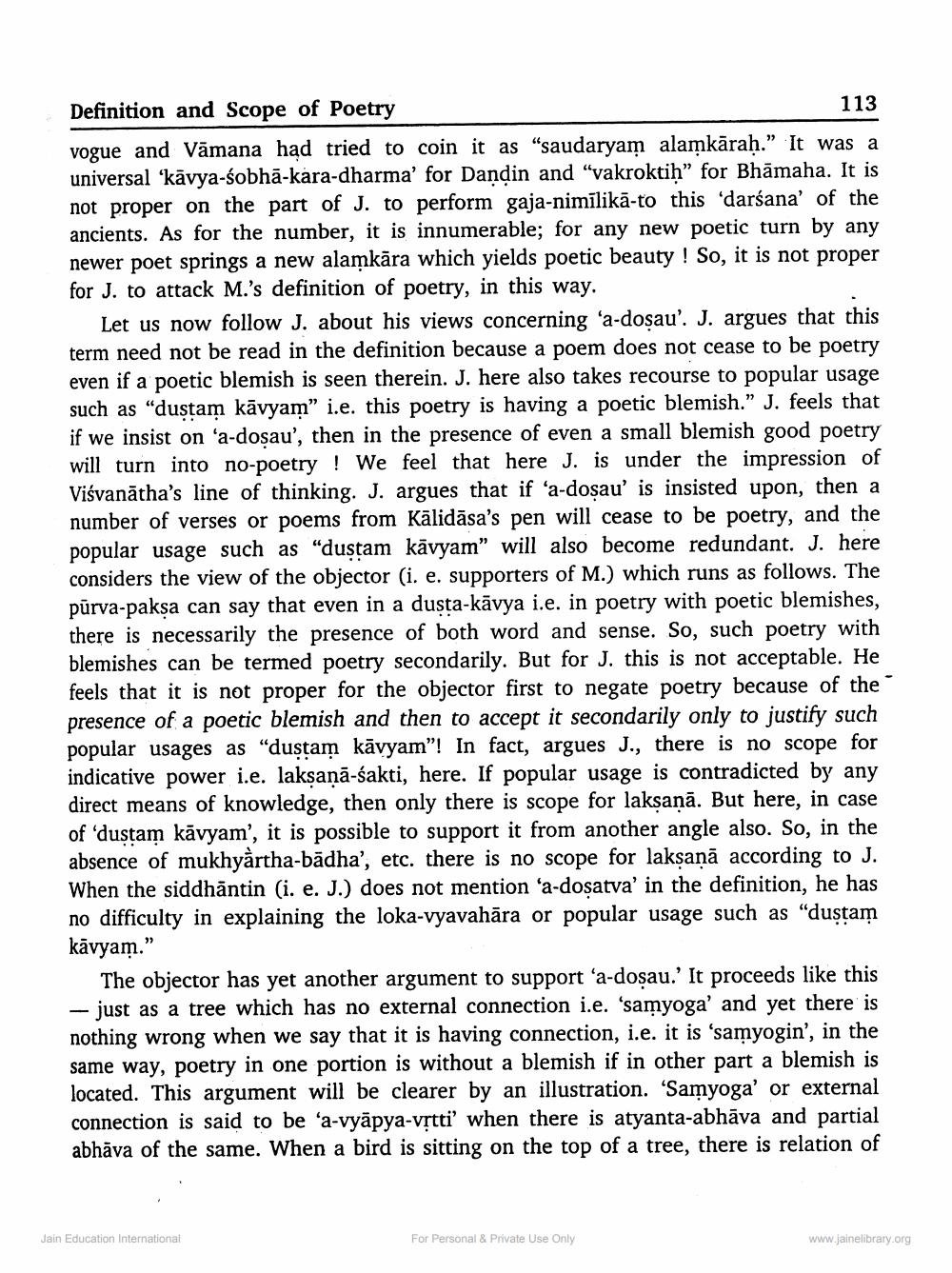________________
Definition and Scope of Poetry
113
vogue and Vāmana had tried to coin it as "saudaryam alamkārah.” It was a universal 'kāvya-sobhā-kara-dharma' for Dandin and "vakroktih” for Bhāmaha. It is not proper on the part of J. to perform gaja-nimīlikā-to this darśana' of the ancients. As for the number, it is innumerable; for any new poetic turn by any newer poet springs a new alamkāra which yields poetic beauty ! So, it is not proper for J. to attack M.'s definition of poetry, in this way.
Let us now follow J. about his views concerning 'a-dosau'. J. argues that this term need not be read in the definition because a poem does not cease to be poetry even if a poetic blemish is seen therein. J. here also takes recourse to popular usage such as "dustam kāvyam" i.e. this poetry is having a poetic blemish.” J. feels that if we insist on 'a-dosau', then in the presence of even a small blemish good poetry will turn into no-poetry ! We feel that here J. is under the impression of Viśvanātha's line of thinking. J. argues that if 'a-dosau' is insisted upon, then a number of verses or poems from Kālidāsa's pen will cease to be poetry, and the popular usage such as "dustam kāvyam" will also become redundant. J. here considers the view of the objector (i. e. supporters of M.) which runs as follows. The pūrva-paksa can say that even in a dusta-kāvya i.e. in poetry with poetic blemishes, there is necessarily the presence of both word and sense. So, such poetry with blemishes can be termed poetry secondarily. But for J. this is not acceptable. He feels that it is not proper for the objector first to negate poetry because of the presence of a poetic blemish and then to accept it secondarily only to justify such popular usages as “dustam kāvyam”! In fact, argues J., there is no scope for indicative power i.e. laksanā-sakti, here. If popular usage is contradicted by any direct means of knowledge, then only there is scope for laksanā. But here, in case of dustam kāvyam', it is possible to support it from another angle also. So, in the absence of mukhyartha-bädha', etc. there is no scope for laksanā according to J. When the siddhāntin (i. e. J.) does not mention 'a-dosatva' in the definition, he has no difficulty in explaining the loka-vyavahāra or popular usage such as "dustam kāvyam.”
The objector has yet another argument to support 'a-dosau.' It proceeds like this - just as a tree which has no external connection i.e. 'samyoga' and yet there is nothing wrong when we say that it is having connection, i.e. it is 'samyogin', in the same way, poetry in one portion is without a blemish if in other part a blemish is located. This argument will be clearer by an illustration. 'Samyoga' or external connection is said to be 'a-vyāpya-vstti' when there is atyanta-abhāva and partial abhāva of the same. When a bird is sitting on the top of a tree, there is relation of
Jain Education International
For Personal & Private Use Only
www.jainelibrary.org




